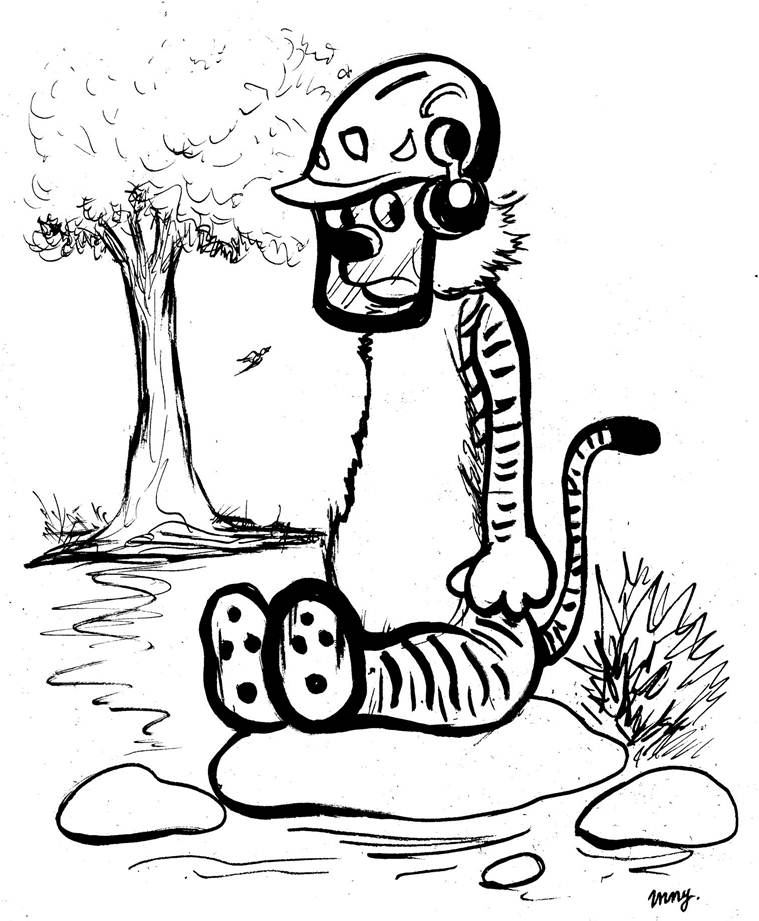My friend Ayyappa
The Sabarimala legend fires a child’s imagination — it has adventure, spectacle, mystery and magic. The current controversy threatens the bond between the hill god and the child.

The Sabarimala temple would remain closed for a few weeks before it opens for its extended annual festivities next month
Lord Ayyappa and the cartoon — only a child would mention the two in the same breath. That is what could happen if you ask Kerala’s children to list the charms of growing up in their home state. Out of the Hindu pantheon, Ganesh and Hanuman delight the young but thanks to sheer proximity, Ayyappa on the Western Ghats is an extra gift to the region’s children. Well before they are conscious enough to believe or disbelieve, they bond with this fascinating hill god.
It is at about the same age, when they can’t quite figure out content, that children fall for the deceptively easy to draw and disarmingly simple comic form. The cartoon has a huge presence in Kerala, unmatched by any other Indian language press or the English newspapers. Next year marks a hundred years of Malayalam cartooning. There is much in the journey to celebrate. You won’t see a single Malayalam daily without one or more cartoons. Till you are ready for the daily news cartoon, you can turn to popular magazines for assorted gag cartoons and a standard fare spread across the last page. Generations of children have grown up on this full page extension of the comic strip, complete with a fixed cast and almost always a child or two in the lead. The most popular of these sequential comic episodes, Boban and Molly by Toms, featured the pranks of a boy and a girl. Along an enviable run for half a century, the title became a byword in the language for inseparable twosomes.
“Right from 1957 when this cartoon feature began in Manorama weekly,” recalls veteran editor and cartoon scholar Thomas Jacob, “Cartoonist Toms presented the boy and the girl with equal prominence. This, years before women’s empowerment was actively voiced.” Natural to a society that accepted the girl child early. He was making a general statement and not in the context of the current conflict around temple entry. In any case, Boban and Molly are well under 10 and are free to enter the Sabarimala temple. That they are born to Christian parents doesn’t matter either. What matters is that Kerala’s children have stakes in the Ayyappa shrine. The last few weeks, even as parental and grand parental voices rose shriller and louder across the state, children watched silently, unless they were tutored.
Left to themselves, they would have wondered why there is such public anger over an endearing hero of an eminently replayable story. The legend is the perfect package that fires a child’s imagination — adventure, spectacle, mystery, magic and the martial arts, complete with the suggestion of signature sound. The little lord wears a chiming golden bell around his neck. Described as the lord of the jungle (Kanana Devan), Ayyappa, an abandoned baby, was brought up by a royal couple and mentored to succeed to the throne. The plot thickens when triggered by palace intrigue, he is sent out to the jungle to fetch tiger milk. The 12-year-old returns triumphant riding a tigress.
The stuff of which Calvin and Hobbes is made. Reference to the comic doesn’t trivialise matters. Bill Watterson, the comic strip’s creator, is on record that he modelled his characters on men of substance. Calvin, the bratty kid, on John Calvin, a 16th century French theologian who believed in predestination and Hobbes, the big cat, on Thomas Hobbes, the 17th century English philosopher whose repertoire extended from optics to geometry and law to the classics. If you still feel that cartoon art is too frivolous to be mentioned alongside godly matters, look for the Gospel According to Peanuts and The Parables of Peanuts, both by Seminarian Robert L Short on Charles Schullz’s celebrated comic strip Peanuts. The bestsellers brought insights from Christian theology to millions of lay readers.
Like the Gospel, Hindu texts offer their own ways of reaching God. If you are a devotee you can choose out of nava vidha bakthi (nine forms of devotion). Of which sakhya (friendship) seems closest to the bond between the child and Ayyappa. Neither supplicant nor strident, this is an easy assured fellow feeling, the kind that existed between Arjuna and Krishna and could have been at the root of the surging sense of fraternity that was in evidence when the state fought floods. As Kerala rebuilds, it must be a lot more child-friendly to retrieve and build upon its Euro-grade social indices, famously achieved on a shoe string. In 2016, UNICEF declared it as the first “child-friendly state” in India and went on to extend the scope of child rights from health and education to “a voice, love, hope, laughter and play”. As much as grownups have the right to defend their faith, in a caring society the child has the right to playful imagination.
The Sabarimala temple would remain closed for a few weeks before it opens for its extended annual festivities next month. This godsend gap must be used to de-escalate the conflict, at the least its spillover into networked neighbourhoods. Or else, the current stress level will become the new norm where the child and its sakhya, Ayyappa, would have no place. It would be a painful irony if a sad and gloomy Kerala were to celebrate its cartoon centenary next year.
Ayyappa’s earthly sojourn was for a mere 12 years. The child god must be restored to the child. Grownups can move on to bigger games.
ep.unny@expressindia.com
For all the latest Opinion News, download Indian Express App
More From E P Unny
- Far from Marina, in the rain, paying homage to KalaignarKalaignar is no mere son of the soil. World Tamil leader is how he is described by the few posters you see with some text.…
- Editor Who Saw The FutureAs the country, and journalism, changed, TVR Shenoy never seemed overtaken..
- Subversion on the SandsAt a fishing settlement in Chennai, an annual festival continues to bring together an unusual range of art forms...







































No hay comentarios:
Publicar un comentario